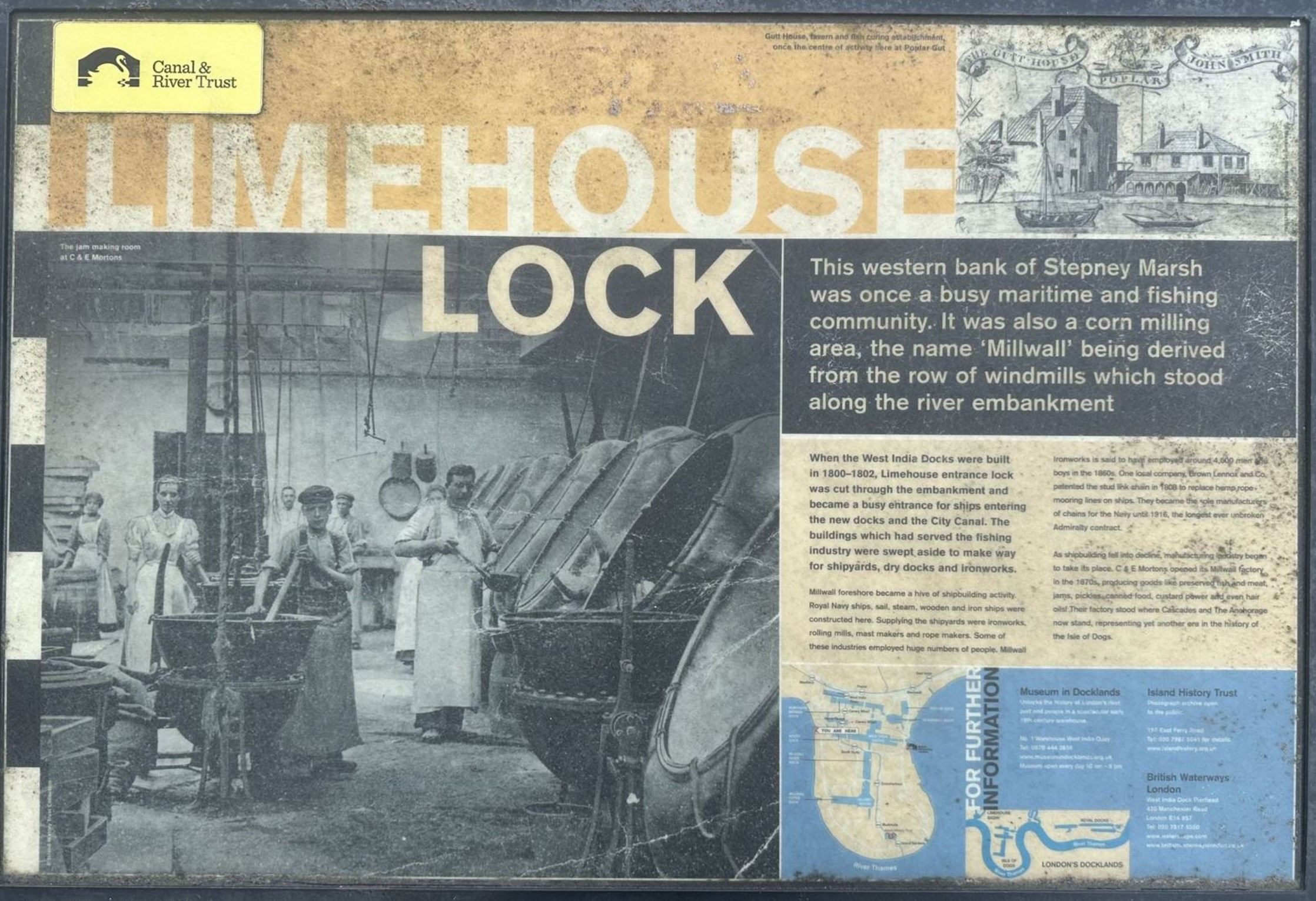Limehouse Dock

This western bank of Stepney Marsh was once a busy maritime and fishing community. It was also a corn milling area, the name 'Millwall' being derived from the row of windmills which stood along the river embankment.
When the West India Docks were built in 1800-1802, Limehouse entrance lock was cut through the embankment for ships entering the new docks and the City Canal. The buildings which had served the fishing industry were swept aside to make way for shipyards, dry docks and ironworks.
Millwall foreshore became a hive of shipbuilding activity. Royal Navy ships, sail, steam, wooden and iron ships were constructed here. Supplying the shipyards were ironworks, rolling mills, mast makers and rope makers. Some of these industries employed huge numbers of people. Millwall Ironworks is said to have employed around 4,000 men and boys in the 1860s. One local company, Brown Lennox and Co, patented the stud link chain in 1808 to replace hemp rope mooring lins on ships. They became the sole manufacturers of chains for the Navy until 1916, the longest ever unbroken Admiralty contract.
As shipbuilding fell into decline, manufacturing industry began to take its place. C&E Mortons opened its Millwall factory in the 1870s, producing goods like preserved fish and meat, jams, pickles, canned food, custard powder and even hair oils. Their factory stood where Cascade and The Anchorage now stand, representing yet another era in the history of the Isle of Dogs.
Note, the web address on the poster has since been changed to https://www.londonmuseum.org.uk/
Tags:Thames Walk
This update was first written by Darren Wall
on Sunday 1st Sep 2024.
Privacy : public
